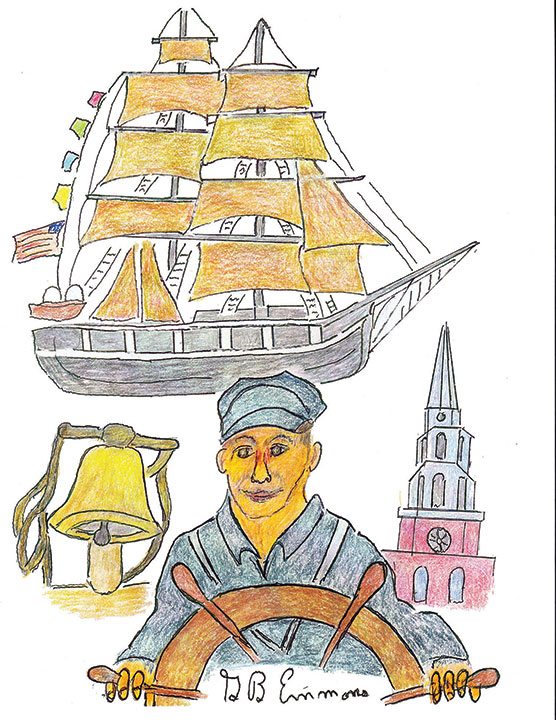Charles W. Morganis the one and only, absolute last remaining square-mast wooden whaling ship in existence.
Built in New Bedford in 1841 at the New Bedford Hillman Boat Yard, its purpose was to harvest whale blubber for lamps that were said to light up the world around the nautical seven seas of the 19th and 20th centuries. It was constructed with a live white oak keel fastened together with copper bolts, and Southern yellow pine beams were joined with sturdy hemlock hanging knees. It was so well built that it survived years of raging storms all around the world. It even outlasted the bark Wanderer, which was destroyed on the rocky shore of Cuttyhunk Island in August of 1924.
TheMorganremains safe and sound, berthed as a museum whaleship in Mystic, Connecticut. It is there to the credit and seamanship of the late Claude S. Tucker of Fairhaven.
TheMorganstarted the first of her 37 voyages by reaping 59 whales for 1,600 bales of right oil and five tons of whalebone. In all her 80 years of productivity, she had no less than 26 successive captains. However, the most consequential skipper toward the end of her journeys was Captain Tucker.
Tucker had been hired by the firm of Taylor Marine at Union Wharf in Fairhaven to supervise the recovery of her beached hull at the Round Hill, Dartmouth estate berth of Colonel Edward Howland Robinson Green, son of the late Hetty Green. He subsequently retrieved her by digging channels to proceed along a complicated and treacherous journey to Mystic in 1941. Once reaching Mystic with the help of the Coast Guard Academy in New London, he was able to supervise her pristine reconstruction. The Morganwas later listed on the National Registry of Historic Places.
Captain Tucker continued to devotedly commute daily from Fairhaven to Mystic to further her reconstruction to exact historic credentials. All during the years of the second World War, he was so dedicated and exacting that the ship was able to later embark on a final 38th voyage without him. For educational and publicity purposes, the Morganvisited Block Island, New Bedford, Plymouth, Boston, and Newport. She had become a movie star in three films – Miss Petticoats, Down to the Sea In Ships, and Java Head. In 1971, the Morganwas placed on a United States Commemorative Postage Stamp of Historic Preservation.
Today there are still many other whaling reminders other than the actual ships. From the Seaman’s Bethel place of worship in New Bedford along the cobbled street past to the Fishing Heritage Museum and the Whaling Museum, inside there is an almost life-size replica of the real thing. And when church bells ring from the towers overlooking the harbors of Southcoast waterfronts, they might, to whaling historians, seem to toll for the passage in time of a romantic bygone way of life. And, to me, the sound might echo back to the clang of a ship’s bell on the quarterdeck to summon a change of helmsman upon the bridge.
To this very day, descendants of Captain Tucker live on Summer Street in nearby Fairhaven, a short distance from the Union Warf where the Morganbegan her final journey. I have been asked by them to write this illustrated article to enlighten you of the Captain’s illustrious and historical legacy.
By George B. Emmons
